In the city that prides itself on never sleeping, repair to local infrastructure has a tendency to progress at a snail's pace. Take for example an ever-widening and deepening pot hole on Carroll Street between Smith and Hoyt Street.
Local residents first noticed a slight indentation in the surface of the road last summer. Several 311 calls were made to report the problem, but no action was taken. By the fall, the depression had become more pronounced and Carroll Street residents called in more complaints.
John Verderame, for one, kept careful track of all his calls, like this one made on October 22, 2013.
Instead of a road crew, the City sent out the Department of Environmental Protection, which visited the two residences on either side of the street near the cave-in to see if perhaps their sewer or water pipes had collapsed and had caused the problem. It was quickly determined that that was not the case. No one seemed to be concerned of the fact that the pot hole was actually right next to a gas connection point.
In the meantime, the roadway near the original pothole started to become more uneven. Again, 311 calls were made and more service requests were filed. To no avail.
This past Sunday, Verderame and a few neighbors stood near the cave-in and noticed a strong smell of gas. They immediately called 911, and two firetrucks arrived immediately. Firemen poked a probe into the front yard of nearby brownstones, but determined that the gas leak was right in the street, right at the pothole. The fireman told local residents that they would refer this matter to National Grid as an EMERGENCY.
Verderame and his neighbors were relieved, imagining that National Grid would take immediate action. Shortly after the firemen left, a truck from National Grid showed up. The crew confirmed that the leak was right at the spot were the cave-in on the road had occurred, and not in someone's house. That was great news.
However, as the crew explained, that would mean that it was no longer deemed an "emergency." As it was explained to John Verderame, a gas leak in the street can wait. National Grid would be back in 6 months to 1 year to fix the problem, he was told.
Residents on the block are stunned. If it will take so long to repair the leak, the pot hole will be even deeper and the problem may take over two years to be addressed. And of course, there is concern about the leak itself.
The cave-in on Carroll Street is by no means the only problem with crumbling infrastructure in our neighborhood. Just a few weeks ago, I posted photos of a parked SUV that seemed to be getting swallowed by a pothole on Third Avenue in Gowanus.
If you have been trying to get a problem fixed on your block, please share. And tell us how long it took to actually get any results.
Local residents first noticed a slight indentation in the surface of the road last summer. Several 311 calls were made to report the problem, but no action was taken. By the fall, the depression had become more pronounced and Carroll Street residents called in more complaints.
John Verderame, for one, kept careful track of all his calls, like this one made on October 22, 2013.
Service Request #: C1-1-901500023
Date Submitted: 10/22/13 1:02:54 PM
Request Type: Street Condition
Details: Cave-in
Date Submitted: 10/22/13 1:02:54 PM
Request Type: Street Condition
Details: Cave-in
Your Service Request was closed.
The City inspected the condition you reported and asked the Department of Environmental Protection to address the issue.
Instead of a road crew, the City sent out the Department of Environmental Protection, which visited the two residences on either side of the street near the cave-in to see if perhaps their sewer or water pipes had collapsed and had caused the problem. It was quickly determined that that was not the case. No one seemed to be concerned of the fact that the pot hole was actually right next to a gas connection point.
In the meantime, the roadway near the original pothole started to become more uneven. Again, 311 calls were made and more service requests were filed. To no avail.
This past Sunday, Verderame and a few neighbors stood near the cave-in and noticed a strong smell of gas. They immediately called 911, and two firetrucks arrived immediately. Firemen poked a probe into the front yard of nearby brownstones, but determined that the gas leak was right in the street, right at the pothole. The fireman told local residents that they would refer this matter to National Grid as an EMERGENCY.
Verderame and his neighbors were relieved, imagining that National Grid would take immediate action. Shortly after the firemen left, a truck from National Grid showed up. The crew confirmed that the leak was right at the spot were the cave-in on the road had occurred, and not in someone's house. That was great news.
However, as the crew explained, that would mean that it was no longer deemed an "emergency." As it was explained to John Verderame, a gas leak in the street can wait. National Grid would be back in 6 months to 1 year to fix the problem, he was told.
Residents on the block are stunned. If it will take so long to repair the leak, the pot hole will be even deeper and the problem may take over two years to be addressed. And of course, there is concern about the leak itself.
The cave-in on Carroll Street is by no means the only problem with crumbling infrastructure in our neighborhood. Just a few weeks ago, I posted photos of a parked SUV that seemed to be getting swallowed by a pothole on Third Avenue in Gowanus.
If you have been trying to get a problem fixed on your block, please share. And tell us how long it took to actually get any results.


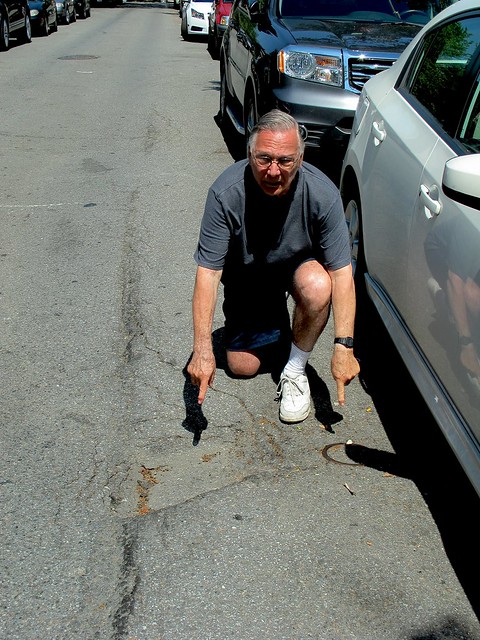
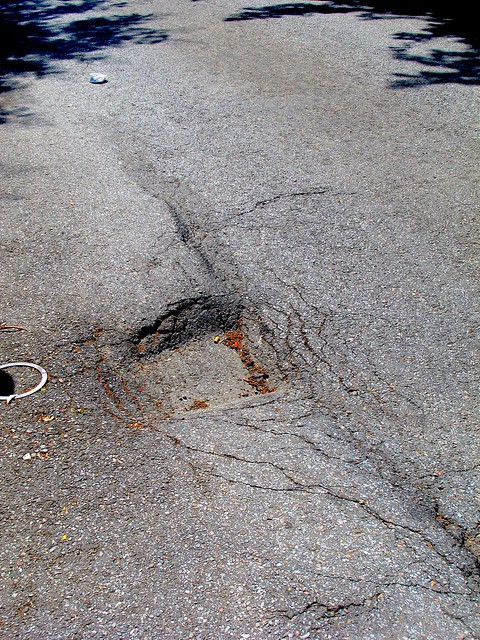

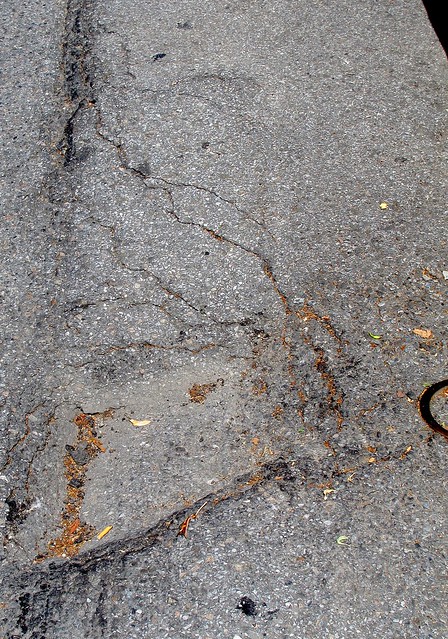
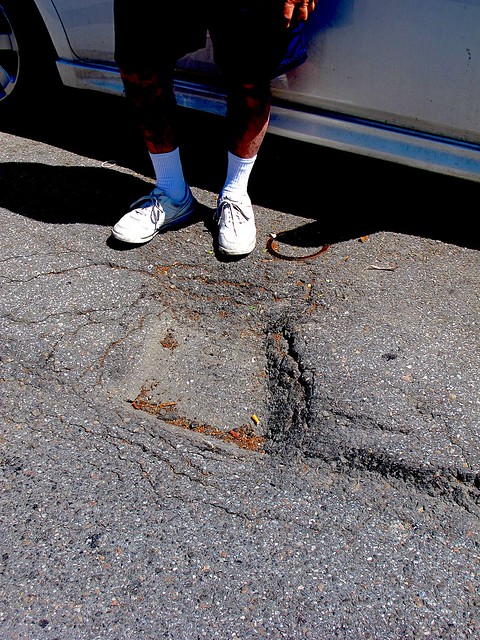
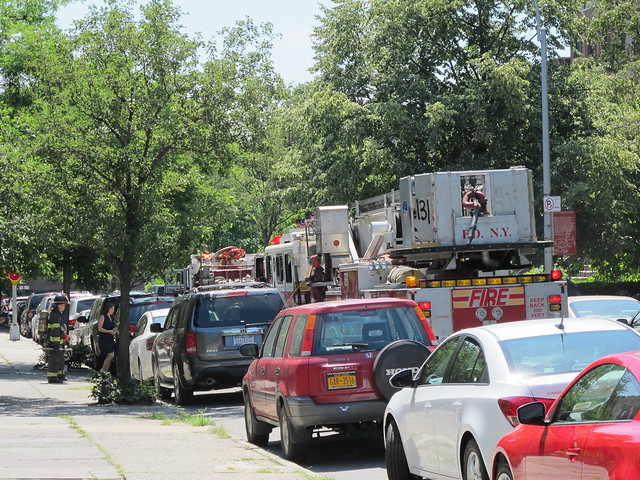
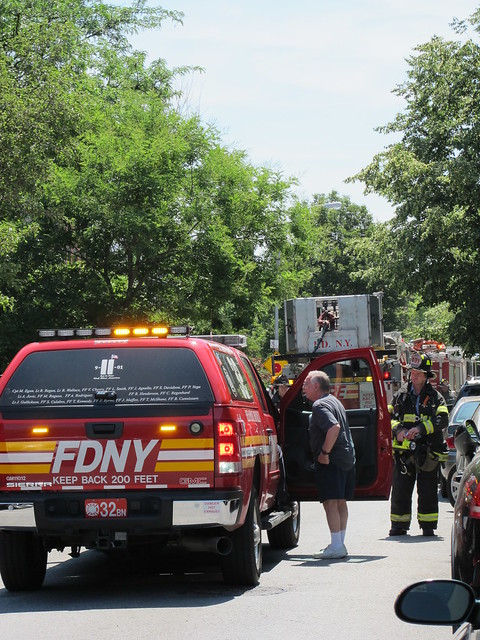
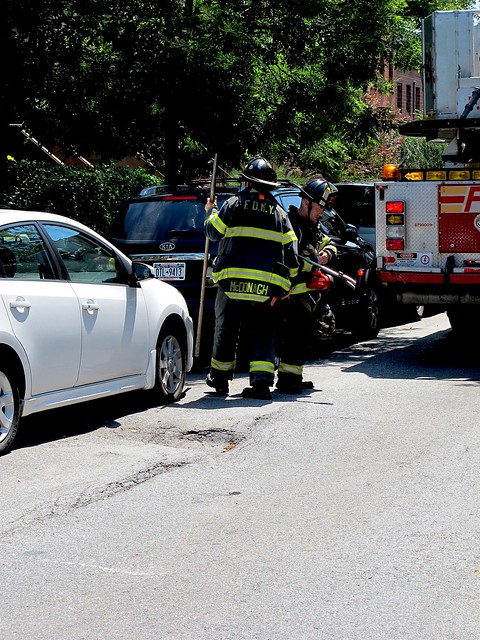
A gas leak in the street is not an emergency?!? That's totally moronic and insane. I guess that means the gas leak in upper Manhattan earlier this year that leveled a building and killed some of its residents was not an emergency either when the smell of gas had been reported, right? I hope the residents on Carroll Street will not let this stand.
ReplyDeleteNo worries, Anon. I think Mr. Verderame will not rest till it is taken care of.
ReplyDelete